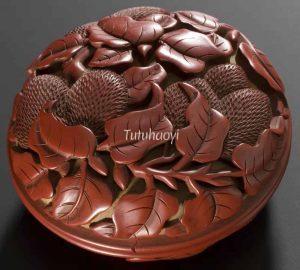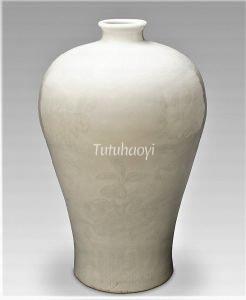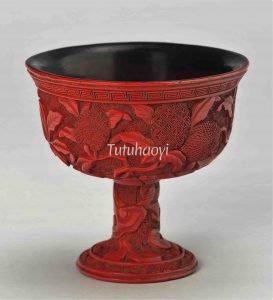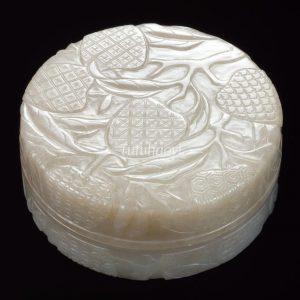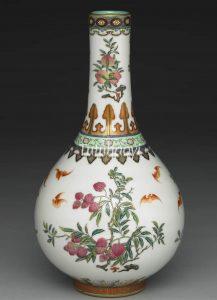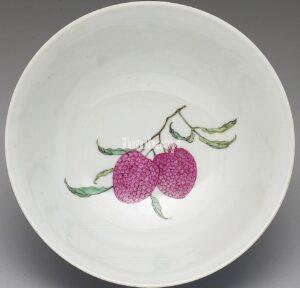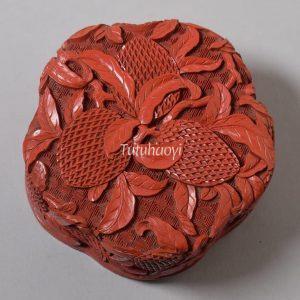Lychee
荔枝
© Tutuhaoyi.com owns the copyright of the description content for the images attached. Quoting all or part of the description content on this page is permitted ONLY IF ‘Tutuhaoyi.com’ is clearly acknowledged anywhere your quote is produced unless stated otherwise. (本页描述内容版权归Tutuhaoyi.com所有,转发或引用需注明 “Tutuhaoyi.com”, 侵权必究, 已注开源信息的条目除外。)
Also named leechee, lichee, lichi, or litchi (nut).
Lychee is a tall tropical evergreen tree of the soapberry family (Sapindaceae) native to southeastern China. It was recorded in the Xijing zaji (西京杂记, Miscellaneous Records of the Western Capital), a collection of short semi-historiographical stories from the Western Han dynasty (西汉, 206 BCE – 8 CE) court, that the governor of the South Sea used to send lychees to Emperor Liu Bang’s (刘邦, 256 BCE – 195 BCE) court as an imperial delicacy. The small fruit of lychee consists of a pink-red, roughly-textured skin, a translucent white fleshy aril, and a big or a shrivelled seed (known as the ‘chicken’s tongue’). The aromatic flesh of the fruit is juicy and sweet but its floral flavour would be easily lost and the rind would turn dark soon after harvesting. No wonder Emperor Xuanzong (玄宗, reigned 713–756 CE) of the Tang dynasty would deploy his Pony Express-like imperial couriers to deliver lychees to the capital in order to please his favourite concubine Lady Yang (杨贵妃, 719–756 CE). The Tang poet Du Mu (杜牧, 803–852 CE) wrote, ‘The dust cloud behind a galloping horse in the distance brings a smile to Lady Yang’s face; because only she knows that means the arrival of her favourite lychees (一骑红尘妃子笑,无人知是荔枝來).’ In late imperial China, when pun rebus pictures became in vogue, the image of lychee appeared in designs where the sound ‘li’ is needed to indicate ‘li 利’ for ‘profit’ because the first character in the Chinese name for lychee, ‘lizhi 荔枝’, is also ‘li’.
The Europeans first saw lychee’s image in Michal Boym’s Flora Sinensis (1657), which contains an illustration of ‘Lici Fruit Tree’. Michal Boym is a Jesuit missionary from Polish-Lithuanian Commonwealth.
literature research by Dr Yibin Ni
Related Pun Picture:
Fig 1: cinnabar lacquer container, Ming dynasty (1368–1644), courtesy of the National Museum of Scotland, Edinburgh, Scotland
Fig 2: porcelain moon flask with underglaze blue decoration, Yongle period (1403–24), Ming dynasty, courtesy of the Trustees of the British Museum
Fig 3: Meiping porcelain vase, Yongle period (1403–1424), Ming dynasty, courtesy of the Art Institute of Chicago
Fig 4: cinnabar lacquer stem cup, 1400–1599, courtesy of the Art Institute of Chicago
Fig 5: carved nephrite jade box with lid, c. 1500–1600, courtesy of the Victoria & Albert Museum, London
Fig 6: cinnabar lacquer plate, 16th-17th century, Ming dynasty, courtesy of the National Palace Museum, Taipei
Fig 7: fan-shape painting by Jiang Tingxi (蒋廷锡1669–1732), Qing dynasty (1644–1911), courtesy of the National Palace Museum, Taipei
Fig 8-9: porcelain vase with overglaze enamelled decoration, Qianlong period (1736–95), Qing dynasty, courtesy of the National Palace Museum, Taipei
Fig 10 and 11: two porcelain bowls with overglaze enamelled decoration, Qianlong period (1736–95), Qing dynasty, courtesy of the National Palace Museum, Taipei
Fig 12: jade carving, Qing dynasty (1644–1911), courtesy of the National Palace Museum, Taipei
Fig 13: cinnabar lacquer container, 18th century, courtesy of the Victoria & Albert Museum, London
Fig 14: cinnabar lacquer container, Qing dynasty (1644–1911), courtesy of the National Palace Museum, Taipei
